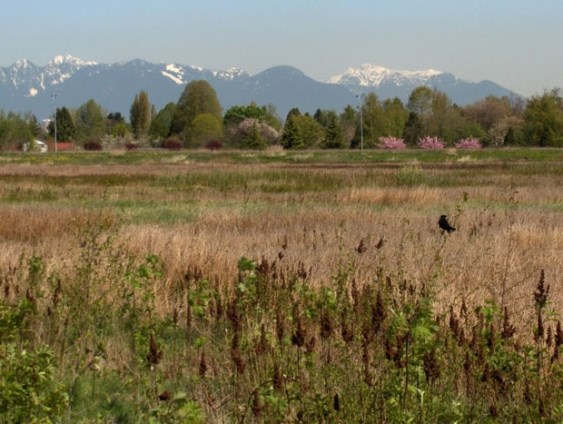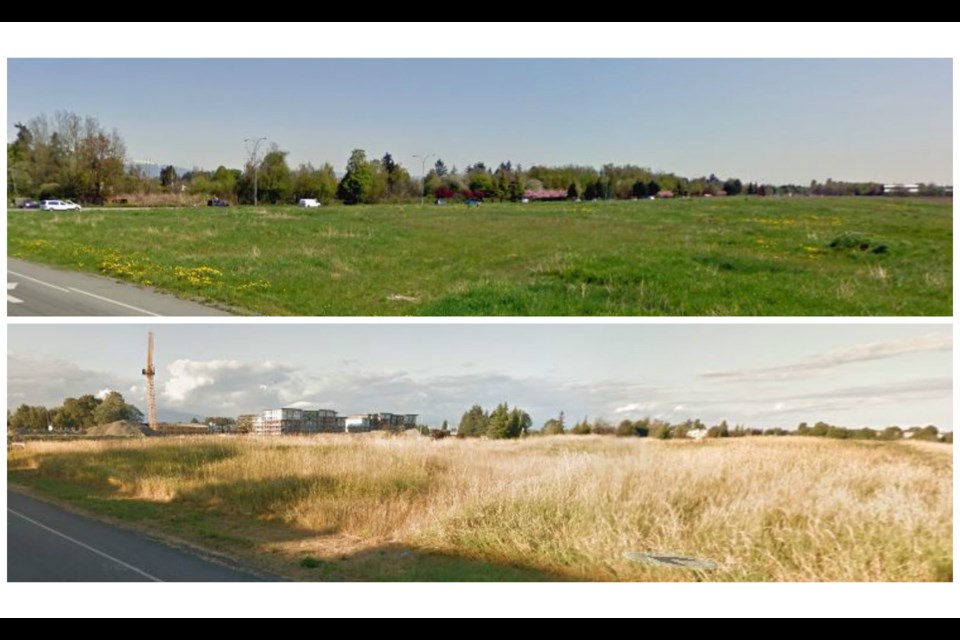Have a look at the photo, taken two years ago from Richmond’s City Centre. It’s one-fifth of a panoramic scene. The rest of the panorama includes the Lions to the west (left) and Mount Baker to the southeast.
At the mid-point, you see part of Richmond’s last mixed urban forest, also known as the Alderbridge wildlife corridor.
It’s on the north edge of noisy Alderbridge Way, but you could crouch there on a sunny day and feel bathed in the sounds of nature.

It’s special to sense nature’s life as you soak in natural viewscapes from the middle of a city. No wonder the City of Richmond put this legacy viewscape on the covers of its 2014 Legacy Landscapes booklet.
The bad news: Although the forest had layers of protection, the city brushed them aside, ignoring the pleas of informed citizens. That doomed the mixed urban forest. A band of developments has taken its place. As a legacy step, it’s like sticking duct tape on Leonardo’s Mona Lisa at eye level.
The good news: We can shift the mixed urban forest south across Alderbridge. We can regenerate it on the Garden City Lands between the Alderbridge sidewalk and the dike-road trail. If the city acts on this, it will enrich a Legacy Landscapes idea — perimeter woods.
Before the doomed forest was moonscaped, people looked north at it and wondered which side of Alderbridge it was on.
From the photo, you may wonder, too. In that aspect, the old and new forest will eventually look the same.
Efficient technology and potential funding exist to transplant mid-size trees from demolition sites for this purpose. Crucially, there’s a manager on staff who could lead it well.
Lately, in a Bridge Street development area with more than 250 trees, only nine were kept. Although we want to retain more trees where they are, let’s re-home trees as need be. In that way (among others), the lost legacy of mixed urban forest can take shape again as an engaging ALR feature of our new central park.
As I see it, there will be most kinds of Richmond trees there, especially evergreens that grow to a happy-medium height, screening the developments but not the mountains.
Along Alderbridge in the northwest corner of the park, half the 50,000 cubic metres of clay in “the mound” could be moved to make way for forest soil and trees. (That clay would then be mixed with organic soil for agriculture.)
As before, the Alderbridge mixed urban forest would stretch from Garden City Road to No. 4 Road, but the ends of the strip would ideally curve south.
From most angles, that would screen the intersections, making for greener viewscapes.
All going well, the ecosystem of the lost legacy will thrive again, with values for wellness, wildlife and more.
Let’s get this right.
Jim Wright is president of the Garden City Conservation Society



